The expansion of wine production and consumption in Europe stands as a testament to the continent’s enduring influence on the global wine industry. From its roots in prehistoric times, viticulture has evolved into a sophisticated enterprise that has seen a steady increase, particularly from the 15th century during the age of European expansion.
Despite setbacks like the phylloxera louse infestation of 1887, innovations in science and technology adapted viticulture practices fostering an environment for growth in industrial wine production and global consumption. Today, European wines remain at the forefront of the industry, a symbol of quality and tradition, embraced by both old and new wine enthusiasts worldwide.
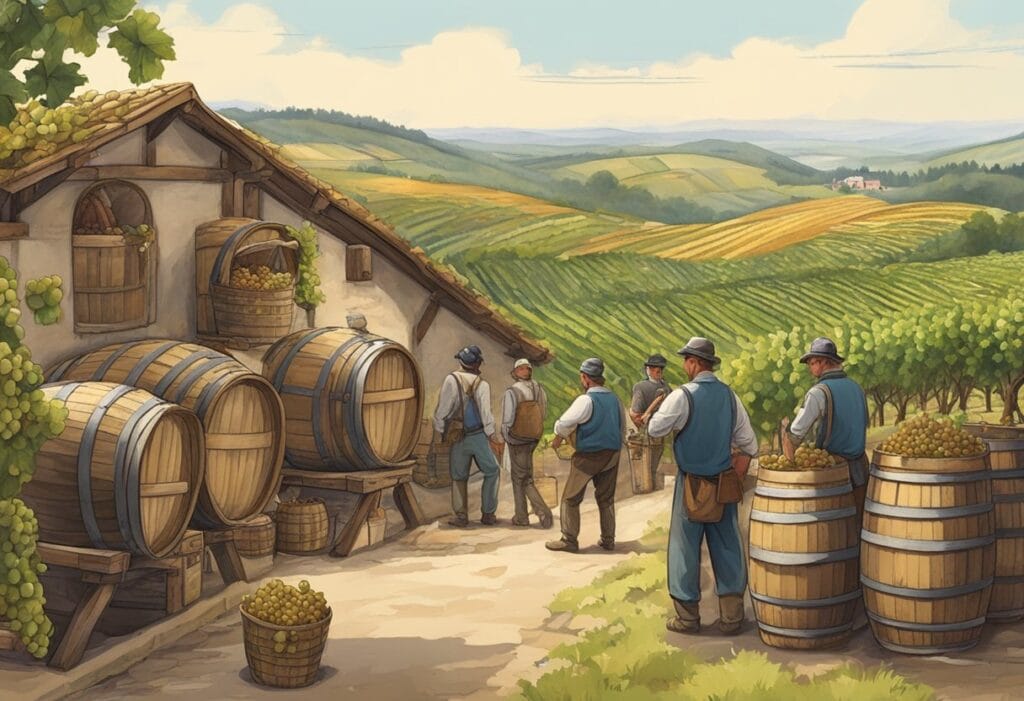
Efforts to consolidate the European wine sector have reinforced its position as the world leader in wine production, consumption, and exports. The EU is the largest wine producer, with a significant portion of the world’s vineyards located in historically renowned wine countries like Spain, France, and Italy.
These regions, steeped in viticultural history, uphold a system that intertwines wine production with economic vitality, cultural heritage, and stringent regulations defining the very essence of European wines. The stringent geographical indications and technological regulations ensure the maintenance of high standards and authenticity, which have become synonymous with European wine appellations.
Key Takeaways
- European wine industry is marked by centuries of growth and adaptation.
- The EU is a dominant force in global wine production and exports.
- Strict regulations preserve the quality and authenticity of European wines.
The Roots of European Wine Expansion
Before exploring the vast landscape of European wine, it is crucial for you to understand the historical development, expanding geographical territory, and the influence ancient cultures wielded on winemaking.
Historical Development
European wine owes its genesis to a rich tapestry of history that is both complex and diverse. Viticulture has been practiced on the continent since the times of ancient cultures, with evidence of Neolithic wine-making hinting at the early origins of this craft. These origins, interwoven with the narrative of Europe’s past, show a persistent growth in both the sophistication of wine production and the scale of vineyards.
Expanding Geographical Territory
From initial cultivation by early civilizations, European viticulture has seen a marked territory expansion. Starting out in regions such as Sumer and the territories of the ancient Mediterranean, wine production spread throughout the continent. This expansion was not just physical but also incorporated new grape varieties, techniques, and vineyard management practices, integral to the continent’s agrarian identity.
Influence of Ancient Cultures on Wine Making
The ancient cultures of Europe greatly influenced the making and consumption of wine. As you explore this topic, it is evident that from classical antiquity, specific methods and traditions of viticulture were carried forward and refined. The influence of ancient cultures on winemaking has been profound, contributing to the diversity and quality of wine that symbolizes European production today.
The Growth of the European Wine Industry
The European wine industry is experiencing dynamic expansion, marked by both traditional practices and modern innovations.
Production Milestones and Growth
Your exploration of European wines might start with a recognition of the region’s centuries old winemaking heritage, which has laid the foundation for today’s growth. Significant production milestones include the adoption of techniques that date back to ancient times, such as the use of amphorae in wine trade, to preserve and transport wine.
In contemporary times, this heritage is evident in the consistent growth of wine production across Europe, with countries like Bordeaux known for their exceptional red wine.
Witnessing an upward trend, European wine production not only honors its traditions but also embraces growth, meeting the increasing global demand for both quality and variety, including sparkling wines.
Technological Advancements in Viticulture
Technological progress in fermentation and distillation has propelled the European wine industry. Advances like precise temperature controls have revolutionized wine stabilization and maturation, ensuring consistency and complexity in every bottle.
Exploring the evolution of winemaking, one might discover the renaissance of wine-making technology, which includes sophisticated irrigation systems and data-driven viticulture, allowing European wine-producing countries to enhance both the quality and quantity of their wine production through innovation.
The Role of the European Union in Wine Expansion
The European Union (EU) plays a pivotal role in the expansion of the wine industry. It establishes regulations and provides support that helps protect the integrity of European wines. This includes geographical indications and designations of origin that assure the authenticity of wines produced in renowned regions.
The collective efforts under the EU not only help European wines to maintain high standards but also facilitate the expansion of the market by negotiating trade agreements and protecting its wine-producing countries against unfair competition. This union has been instrumental in shaping a sustainable growth path for European wine on the world stage.
Economic Impact of European Wine
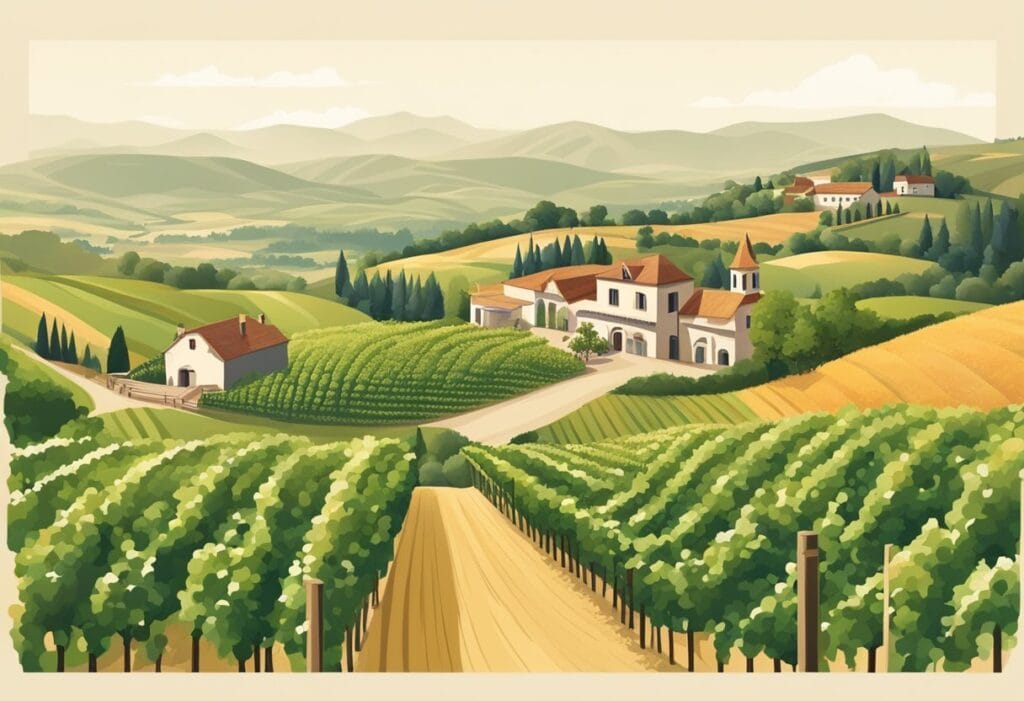
European wine plays an essential role in both the regional economy of wine-producing countries and in the global marketplace. Your understanding of this sector’s economic impact is fundamental to grasp its significance on an international scale.
Contribution to the Economy
European wine industry is a cornerstone for the economy of several member states, where it not only creates jobs but also fosters tourism and local development. For example, the stringent regulations on European wine appellations ensure the protection and promotion of regional wines, enhancing their value and contributing to economic stability.
European Wine Exports
European countries dominate the wine export market. Data indicates that the European Economic Community historically accounted for an average of about 67% of the world’s wine production and 71% of its export markets.
Such figures underscore the pivotal role of European wine exports to the economy of Europe, where countries like France, Italy, and Spain are leading exporters. The success in wine exports supports local agriculture, trade, and contributes significantly to a positive balance of trade.
The Wine Market in Global Trade
Internationally, European wine has a considerable presence in global trade markets. Aspects like the post-pandemic recovery show that the challenges faced by the wine trade, such as those from global headwinds, continue to shape its economic impact.
The European Commission’s adoption of market measures to alleviate excess wine supply exemplifies how integral the wine market is to international trade dynamics. This also illustrates the responsiveness of the European wine sector to global economic fluctuations, ensuring its competitive position in worldwide wine trade.
Cultural Significance and Wine Consumption Patterns
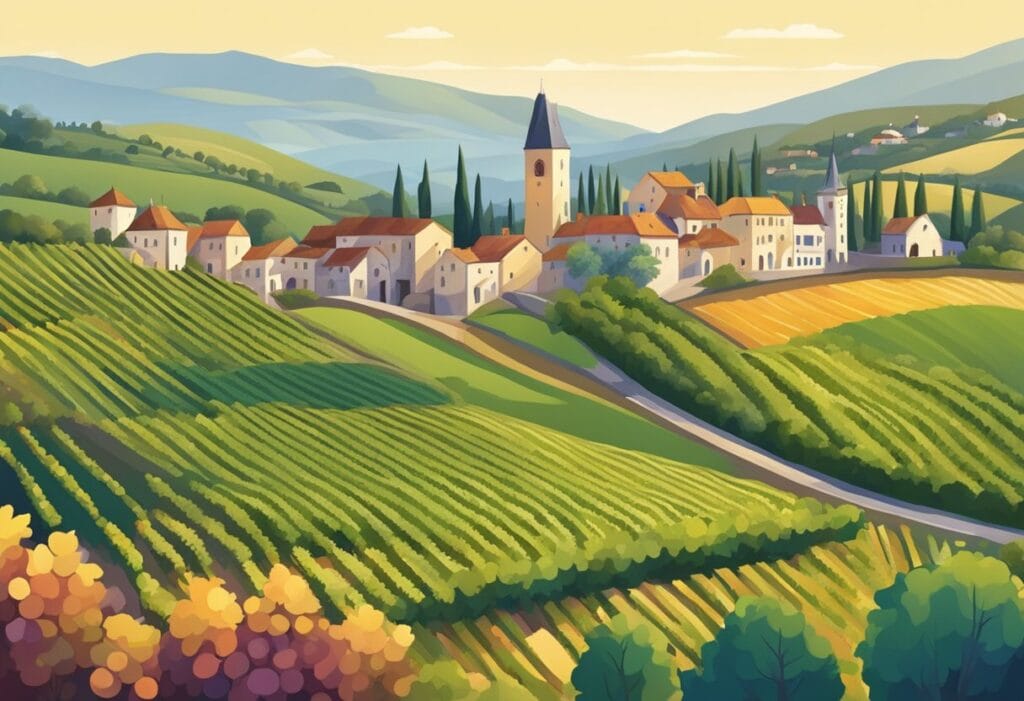
Explore the deep-rooted connection between wine and European society and the evolving trends of wine consumption across the continent.
Wine and European Society
Wine is deeply entwined with the societal fabric of European countries like France, Italy, and Spain. Each region offers a rich tapestry of traditions and practices that reflect its historical appreciation of wine.
Italy’s long-standing history with wine can be traced back to the Roman Empire, where it played a central role in social and religious events, such as the well-known Bacchanalia festivals. Similarly, Greece celebrates its ancient deity of wine, Dionysus, underlying the beverage’s connection to both the divine and the convivial spirit of Greek society.
Consumption Trends Across Europe
In recent years, European wine consumption trends have shown a shift towards quality over quantity. France has seen a trend of moderate but higher quality wine consumption, emphasizing the importance of wine as part of a meal rather than an end in itself.
The role of wine in Portugal and Spain extends beyond simple consumption, enhancing tourism and the economy through widespread wine tourism.
Even in countries with robust brewing traditions, such as Germany, wine is increasingly appreciated for its cultural and health-related attributes. These individual country preferences underscore a continent-wide convergence towards a nuanced understanding and enjoyment of wine.
Sustainable Winemaking in Europe
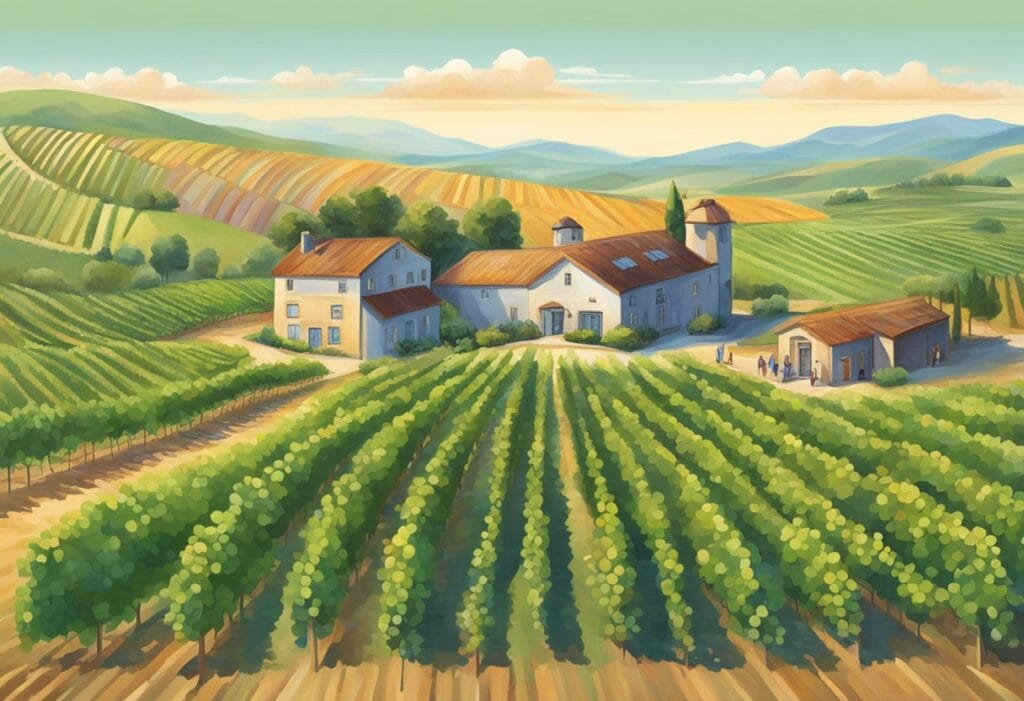
Your understanding of sustainable winemaking practices in Europe is vital, as these touch upon environmental concerns linked to viticulture and the regulatory frameworks that drive sustainability in the industry.
Environmental Concerns and Viticulture
You must acknowledge that winemaking is as much about nurturing the environment as it is about producing quality wine. The wine industry faces climate change challenges, including altered weather patterns and increased levels of pests and diseases.
As part of its commitment to sustainability, European viticulture integrates practices aimed at reducing the carbon footprint, preserving local ecosystems, and managing water resources efficiently. Initiatives like organic farming and the use of renewable energy sources are being implemented to mitigate environmental impacts and ensure the long-term viability of agriculture.
Regulatory Frameworks for Sustainability
The European Commission, working within the scope of the Common Agricultural Policy (CAP), has set out a comprehensive regulatory framework to enhance the sustainability of the European wine sector. This includes legislation that supports sustainable land management, biodiversity, and the reduction of chemical inputs in wines.
Policy choices under the CAP are designed to uphold the competitive edge of European wines while ensuring that the shift towards sustainability doesn’t compromise product quality. Moreover, this framework guides winemakers through the transition to sustainable practices that also consider socio-economic factors.
European Wine Regulations and Classifications
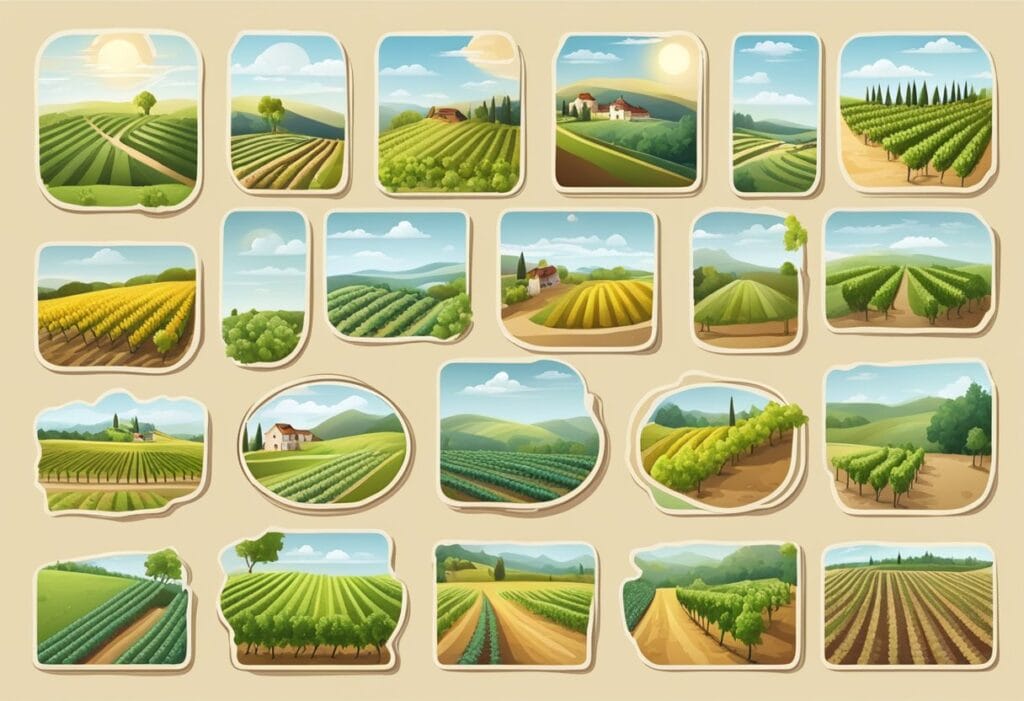
Understanding the complex terrain of European wine laws is essential for recognizing the quality and authenticity of the wines you choose. The European Union (EU) enforces strict regulations and classifications to ensure that every bottle meets high standards.
Protected Designations and Quality Labels
When you select a bottle of European wine, you may notice labels like AOC or PDO. These are types of Protected Designations of Origin (PDO), which authenticate wines from specific regions, guaranteeing that the quality and characteristics are due exclusively to the geographical environment.
The EU’s classification system also includes Protected Geographical Indication (PGI), a label for wines that possess a certain quality, reputation, or other characteristic attributable to their geographic origin.
Italy, renowned for its prestigious wines, rigorously applies these designations, ensuring that if you choose an Italian wine with a PDO or PGI label, it adheres to the strict guidelines for production and quality. It solidifies a reputation for excellence and adherence to traditional methods.
Recent Changes in Legislation
Keeping up with legislation changes can be challenging, but it’s vital for maintaining compliance with EU regulations. The EU has recently mandated new labelling rules that require a comprehensive nutrition declaration and an ingredients list for all wine products sold within the market beginning December 8, 2023. These amendments are in place to enhance transparency and help you make informed choices about the wines you purchase.
The Challenges and Opportunities Ahead
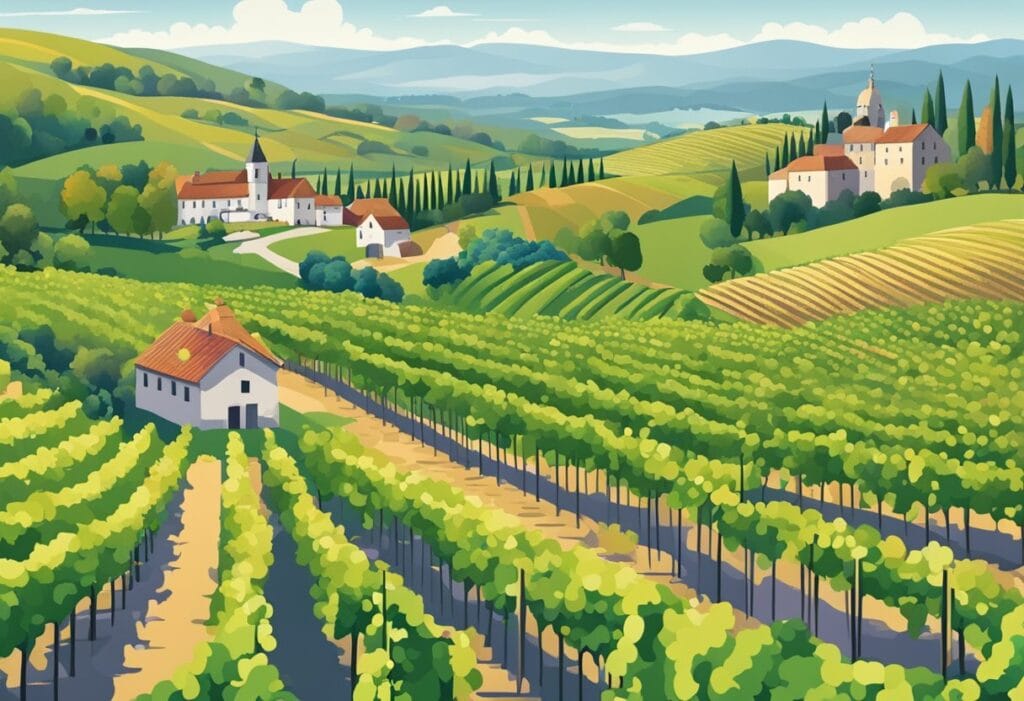
In an evolving landscape, you’ll find that the European wine sector is constantly balancing market trends and globalization efforts. With the impact of COVID-19 still being felt, understanding these dynamics is crucial for growth.
Adapting to Market Fluctuations
Market fluctuations continue to be a significant challenge for the European wine sector. These fluctuations are often influenced by various factors such as changes in consumer preferences and the economic impacts of events like the COVID-19 pandemic.
For example, during the pandemic, there was a shift in demand from wine consumed in restaurants to increased retail sales, as more consumers were enjoying wine at home. Your ability to adapt quickly to these shifts will determine your resilience in the market.
Furthermore, the influence of large markets like the United States and China cannot be underestimated. Fluctuations in their economies can lead to considerable ripples in global wine sales. It’s important for you to monitor these trends and anticipate how changes in these markets can affect demand for European wines.
Opportunities in Emerging Markets
Looking beyond traditional markets, there are significant opportunities in emerging markets. For instance, a growing middle class in countries like China presents a lucrative opportunity for expanding the reach of European wines. Catering to the tastes and preferences of these new consumers could open up new avenues for growth.
Globalization has made it easier for European wine producers to explore these emerging markets, but you must be strategic in your approach. Consider developing partnerships with local distributors and engaging in cultural marketing that resonates with the local demographic. These efforts can help cement your position in these markets and capitalize on the growing demand for wine.
As you navigate the challenges and seize the opportunities in the global wine sector, remain adaptable, strategic, and proactive in your endeavors.

